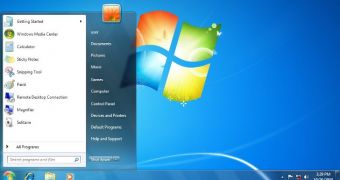Windows 8, Microsoft’s latest bet in the operating system world, comes with great touch-optimized features, most of which are also available in the RT version supposed to be deployed on tablets.
While it’s also developed to serve as a major upgrade over Windows 7, the new operating system doesn’t make much sense on a computer that doesn’t feature a touchscreen display, Forrester senior analyst David Johnson said in an interview with InformationWeek.
Many Windows 8 PC buyers are actually asking retailers to downgrade to Windows 7, even though their newly purchased unit comes with a touchscreen unit but, in most cases, keeping the new software without such a display is a waste of time.
“We're hearing from buyers of Windows 8 PCs looking to downgrade to Windows 7 on non-touch hardware, and enterprises are not keen to move to Windows 8 -- particularly on older hardware -- as a result. For non-touch-enabled PCs like traditional notebooks and desktops with only a touchpad and keyboard, Windows 8 offers no significant advantages, and in many ways offers a worse experience than Windows 7,” Johnson explained.
This may sound a bit awkward given the fact that Microsoft promotes Windows 8 as the right choice for desktop computers with or without a touchscreen unit, but it’s a well-known fact that the Redmond-based giant is betting big on touchscreen units.
According to sources familiar with matter, CEO Steve Ballmer and other high-profile Microsoft executives are blaming PC manufacturers for the slow early uptake of Windows 8.
They claim that the world’s largest computer makers have failed to bring enough touchscreen devices to the market, as they are the only ones supposed to show the full potential of Windows 8.
In addition, the company is reportedly planning to offer significant discounts to manufacturers embracing Windows 8 for touchscreen devices, in an attempt to bring cheaper units to the market.

 14 DAY TRIAL //
14 DAY TRIAL //